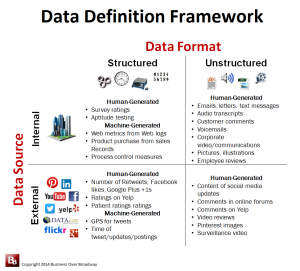Customer surveys are the foundation of many CX programs. Improvements in the content of these surveys, however, have not changed for decades. Businesses now have a plethora of data sources to help them understand their customers. The use of these Big Data sources will necessarily impact the type of questions you need to ask in your customer survey.
![Measure-Customer-Feedback-Chart-2[1]](http://businessoverbroadway.com/wp-content/uploads/2016/05/Measure-Customer-Feedback-Chart-21.png)
Figure 1. Surveys are the most popular method of collecting customer feedback. From Do You Measure Customer Satisfaction? Our Study Says You Should.
While technological advancements have improved many aspects of the customer survey process, including simplifying collection (e.g., Internet) and processing of responses (e.g., machine learning, text analytics), little has been done to improve what questions to include (or not include) in the survey itself. I see three big problems with the content of customer relationship surveys:
- Surveys ask the wrong questions. Companies still include a long list of specific CX questions that can result in an unnecessarily long survey.
- Companies only use self-reported customer loyalty measures in their analytics. The use of loyalty questions (e.g., likelihood to recommend, buy again) in surveys artificially inflates the correlation between satisfaction with the customer experience and loyalty, adversely impacting ROI calculations of CX improvement initiatives. CX professionals typically rely on these self-reported loyalty metrics. While these loyalty metrics do provide useful metrics, we are always interested in what customers really do.
- Customer surveys are too long. Researchers show that people think that surveys are too long (12%) and ask too many personal questions (16%). Additionally, 21% are too busy to take them. It’s no wonder that survey response rates have dropped from 20% to about 2% over the past couple of decades.
Reimagining Your Customer Survey

Figure 2. Data Definition Framework. From The What and Where of Big Data.
In addition to customer surveys, businesses now have access to many sources of data about their customers that they use to help manage customer relationships. Consider CRM systems, 3rd party applications (i.e., Google Analytics), account databases, and log files (see Figure 2). As you can see, customer surveys are only one of many sources of data that companies can use to better understand their customers.
These data sources can be used to augment and enhance the data from surveys, requiring us to rethink what we ask in them. In our Big Data world, customer surveys don’t have to be long. To optimize your customer survey, here are three things you can do.
- Ask general CX questions: Customers’ ratings about general customer experience areas (e.g., product, support) explain as much of the differences in customer loyalty as we are able to with specific customer experience questions. Use other, non-survey data to understand specific aspects of the general customer touch points (e.g., product complaints, call center metrics).
- Leverage other customer data: Consider integrating your customer feedback data with other customer data. Companies can link up financial data with customer feedback data to understand drivers of actual loyalty behavior (e.g., purchase amount, products purchased, products liked, products shared and renewed contract).
- Shorten your survey to 5 or fewer questions: A study found that customers are more willing to complete shorter surveys than longer surveys.
Summary
Given the variety of data sources (and metrics) available today, business leaders need to reexamine their customer relationship survey. Research suggests that we may be 1) asking customers the wrong (e.g., too specific) questions in customer surveys, 2) relying on customer surveys to capture information (e.g., loyalty intentions, demographics) that is best captured by other systems and 3) asking too many questions.
Next month, I will explore a new survey method that I developed that requires your customers to answer only two open-ended survey questions. While I have written about some aspects of this new approach in prior blog posts (see here and here), I will demonstrate the reliability, validity and usefulness of this approach and compare the results of this approach to longer, traditional customer surveys.
An earlier version of this article originally appeared in CustomerThink.



 Beyond the Ultimate Question
Beyond the Ultimate Question Measuring Customer Satisfaction and Loyalty (3rd Ed.)
Measuring Customer Satisfaction and Loyalty (3rd Ed.)
Comments are closed.